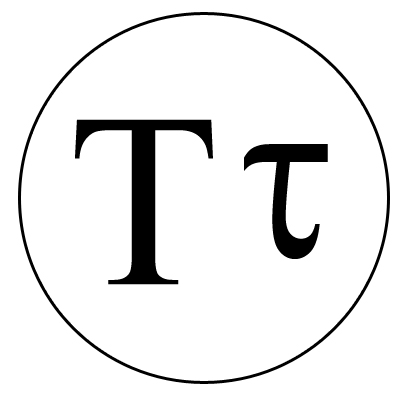Tau refers to the nineteenth letter of the Greek alphabet. Its numerical value is 300. Tau came from the Phoenician letter, ‘taw’, which further gave rise to the Roman letter ‘T’ and the Cyrillic letter ‘Te’. It is a very old symbol and has diverse connotations.
The ancient Greek considered Tau to be symbolic of life and resurrection, while ‘theta’, the 8th letter of the alphabet was used to denote death. In ancient Egypt, the Tau symbol was thought to represent a phallus and was also regarded as the marker for holy waters. Ancient mythology associates the symbol with the Greek deity Attis and the Roman god Mithra or Mithras. Several Western religious traditions and European cultures associate Tau with the crucifix.
According to Kabbalistic beliefs, the symbol refers to the mystical number three and signifies intuition, magic, creativity, and expansion. In the Freemasonry, Templar or Rosicrucian symbology, Tau stands for the all-pervasive God and Its three attributes of strength, wisdom, and harmony. The Tau image has been found in primitive glyphs and is believed to represent the horizon, the place where the sky and the earth meet. The symbol is also considered a sign of the union of the objective and the subjective.

» Amulet
» Ajna
» Arsenic
» Merkaba
» Hung
» Yin Yang
» bindi
» IK Onkar
» Khanda
» Halo
» jiahu
» Tau
» Uraeus
» Menorah
» Quincunx
» Tilaka
» Taijitu
» Vajra
» Chai
» Chi Rho
» Bagua
» Dragon
» Hunab Ku
» Caduceus
» Infinity
» Ichthus
» Hedjet
» Lauburu
» Om
» Ankh
» Chalice
» Pentacle
» Maat
» Ogham
» Mandala
» Kartika
» Khamsa
» Heart
» Labrys
» Sun Face
» Raven
» Triskele
» Scarab
» Dove
» Hanukia
» Anubis
» Trishula
» Durga
» Mezuzah
» Bay Tree
» Geruda
» Kinnara
» Quito
» Condor
» Blue Jay
» Falcon
» Makara
» Rosary
» Uluru
» Apsaras
» Hanuman
» Serpent
» Minotaur
» Mercury
» Apex
» Vestra
» Yoni
» Astarte
» dakini
» Calabash
» Mandrake
» Rebis
» Typhon
» Vegvísir
